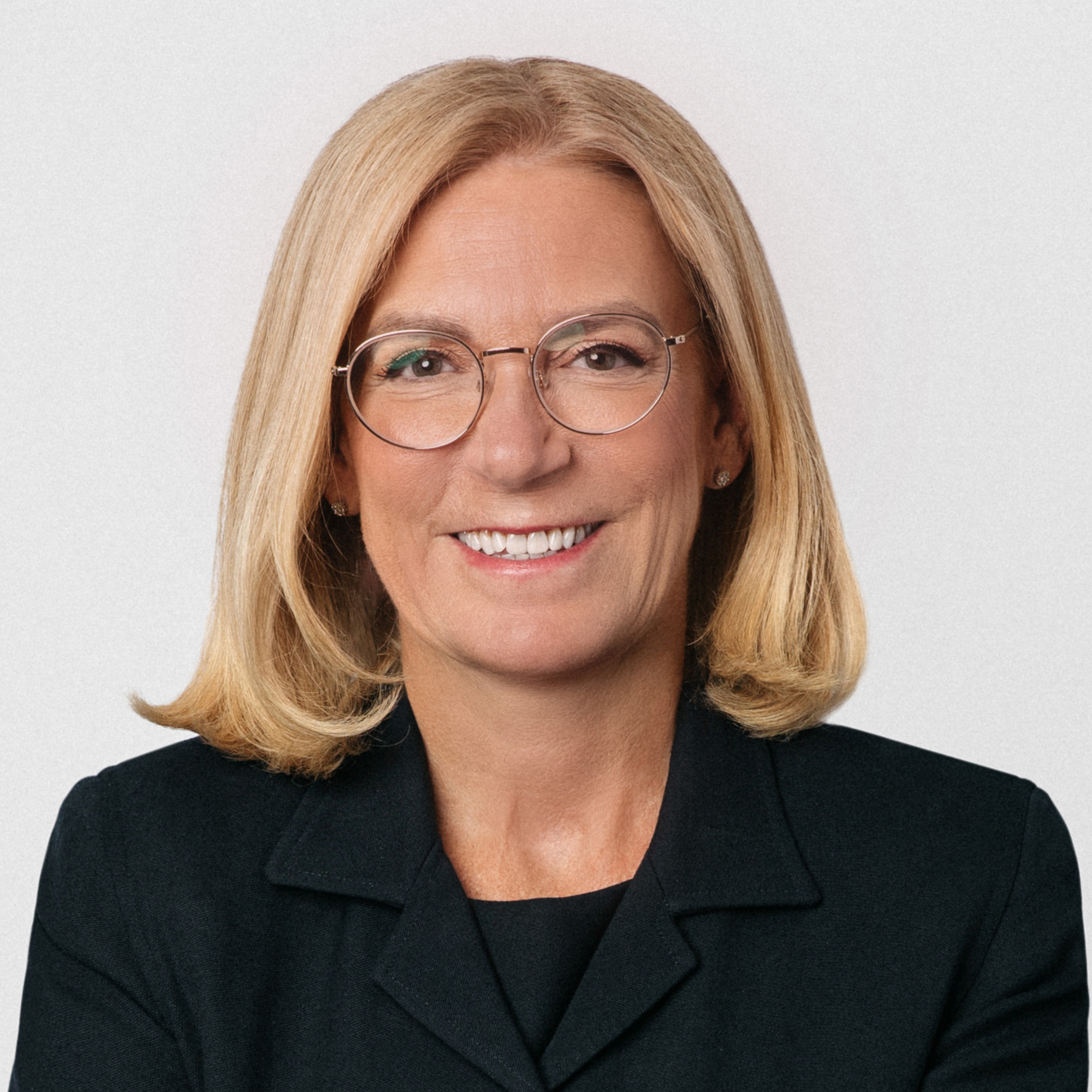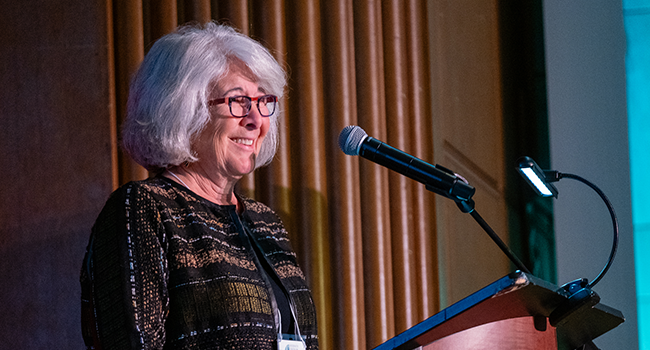Domini Impact Equity FundSM
While pursuing their financial objectives, impact investors seek to use their investments to create a more fair and sustainable world. The Domini Impact Equity FundSM is a diversified stock portfolio seeking long-term total return consistent with the promotion of universal human dignity and ecological sustainability.
Net Assets as of 9/30/2025
Fund: $1,158.9 million
Investor shares: $979.8 million
Daily Price (NAV)
Daily NAV Change
Adviser
Domini Impact Investments LLC
Subadviser
SSGA Funds Management, Inc.
Inception Date
6/3/1991
Symbol
DSEFX
Portfolio Managers



Annual Expense Ratio
Gross/Net: 1.04%/1.04%
Per current prospectus
Front-End Sales Charge (Load)
None
Minimum Initial Investment
$2,500 for standard accounts
$1,500 for retirement accounts, custodial and educational accounts, and standard accounts opened with an automatic investment plan
Investment Strategy
The Fund combines two investment management strategies: “Core” and “Thematic Solutions.”
Core invests in a diversified selection of mid- to large-capitalization U.S. companies that demonstrate peer-relative environmental and social leadership, as determined by Domini’s in-depth research and analysis of each company’s environmental and social impact.
Thematic Solutions adds opportunistic exposure to a select number of solution-oriented companies of any size in which Domini has strong long-term conviction. Through Thematic Solutions, we seek to support the following sustainability themes:
- Accelerate the transition to a low-carbon future
- Contribute to the development of sustainable and resilient communities
- Promote a circular economy with sustainable production and consumption
- Provide access to clean water
- Support more sustainable food and agricultural systems
- Promote societal health and well-being
- Broaden financial inclusion and/or promote sustainable finance
- Bridge the digital divide and/or support sustainable information and communication systems
Under normal market conditions, Domini expects to allocate approximately 80-95% of the Fund’s net assets to Core and the remaining 5-20% to Thematic Solutions.
Domini’s Founder and Chair, Amy Domini, and CEO, Carole Laible, serve as the Fund’s co-portfolio managers. They are supported by a dedicated team of impact-investment research and financial analysts. SSGA Funds Management serves as the Fund’s subadviser, responsible for implementing Domini’s investment instructions for both of the Fund’s strategies and managing its cash needs.
The Fund may change any of the policies described above at any time.

Investor Shares Performance
| Fund | YTD | 1 YR | 3 YR* | 5 YR* | 10 YR* |
|---|---|---|---|---|---|
| DSEFX | 11.01 | 9.39 | 17.52 | 10.31 | 11.69 |
| S&P 500 Index | 17.81 | 15.00 | 20.57 | 15.28 | 14.63 |
| Fund | YTD | 1 YR | 3 YR* | 5 YR* | 10 YR* |
|---|---|---|---|---|---|
| DSEFX | 8.77 | 11.22 | 21.24 | 11.48 | 12.16 |
| S&P 500 Index | 14.83 | 17.6 | 24.94 | 16.47 | 15.3 |
| DSEFX | S&P 500 | |
|---|---|---|
| 2024 | 21.87 | 25.02 |
| 2023 | 28.42 | 26.29 |
| 2022 | -25.70 | -18.11 |
| 2021 | 21.30 | 28.71 |
| 2020 | 30.62 | 18.40 |
| DSEFX | S&P 500 | |
|---|---|---|
| Q3 2025 | 5.73 | 8.12 |
| Q2 2025 | 9.99 | 10.94 |
| Q1 2025 | -6.46 | -4.27 |
| Q4 2024 | 2.25 | 2.41 |
| Q3 2024 | 4.85 | 5.89 |
* Average annual total returns.
Returns for periods less than one year are not annualized.
NOTE: The Fund’s current investment strategy commenced on December 1, 2018 with SSGA Funds Management, Inc as its Subadviser. Performance information for periods prior to December 1, 2018 reflects the investment strategies employed during those periods.
Gross/Net Annual Expense Ratio: 1.04%/1.04% Per current prospectus.
Past performance is no guarantee of future results. The Fund’s returns quoted above represent past performance after all expenses. The returns reflect any applicable expense waivers in effect during the periods shown. Without such waivers, Fund performance would be lower. Investment return, principal value, and yield will fluctuate. Your shares, when redeemed, may be worth more or less than their original cost. See Investor Shares Performance above for more performance information, including returns current to the most recent month-end, which may be lower or higher than the performance data quoted. See the prospectus for further information.
An investment in the Domini Impact Equity Fund is not a bank deposit and is not insured. The Fund is subject to certain risks, including loss of principal, impact investing, portfolio management, information, market, equity securities, mid- to large cap companies’, and small-cap companies’ risks. See the prospectus for more information on risk.
The Adviser’s evaluation of environmental and social factors in its investment selections, as well as its evaluation of a company’s commitment to sustainability solutions, and the timing and amount of the Subadviser’s implementation of the Adviser’s investment selections will affect the Funds’ exposure to certain issuers, industries, sectors, regions, and countries and may impact the relative financial performance of the Fund – positively or negatively – depending on whether such investments are in or out of favor. The Fund may forego some investment opportunities, including investments in certain market sectors that are available to funds that do not consider environmental and social factors and sustainability solutions in their investment selections.
The performance above does not reflect the deduction of fees and taxes that a shareholder would pay on Fund distributions or the redemption of Fund shares. Total return is based on the Fund’s net asset values and assumes all dividends and capital gains were reinvested.
Although the Domini Impact Equity Fund Investor shares are no-load, certain fees and expenses apply to a continued investment and are described in the prospectus.
The Standard & Poor’s 500 Index (S&P 500) is a market-capitalization weighted index representing the performance of large-capitalization companies in the United States. Investors cannot invest directly in the S&P 500.
Holdings
| Security Name | Weight (%) |
|---|---|
| NVIDIA Corp | 7.2 |
| Apple Inc | 7.1 |
| Microsoft Corp | 6.4 |
| Alphabet Inc Class A | 5.5 |
| Amazon.com Inc | 3.9 |
| JPMorgan Chase + Co | 2.5 |
| Visa Inc Class A Shares | 1.7 |
| Netflix Inc | 1.4 |
| Mastercard Inc A | 1.4 |
| Costco Wholesale Corp | 1.2 |
| Total | 38 |
| Sector | Weight (%) |
|---|---|
| Information Technology | 35.7 |
| Financials | 16 |
| Consumer Discretionary | 10.5 |
| Communication Services | 9.7 |
| Health Care | 9.6 |
| Industrials | 7.8 |
| Consumer Staples | 4.9 |
| Materials | 2.8 |
| Real Estate | 2.4 |
| Utilities | 0.6 |
| Total | 100 |
Fund Portfolio weights exclude cash and cash equivalents. Numbers may not add up to totals due to rounding.
The composition of the Fund’s portfolio is subject to change. The Domini Funds maintain portfolio holdings disclosure policies that govern the timing and circumstances of disclosure to shareholders and third parties of information regarding the portfolio investments held by the Funds.
The Global Industry Classification Standard (“GICS”) was developed by and is the exclusive property and a service mark of MSCI Inc. (“MSCI”) and Standard & Poor’s, a division of The McGraw-Hill Companies, Inc. (“S&P”) and is licensed for use by Domini Impact Investments. Neither MSCI, S&P nor any third party involved in making or compiling the GICS or any GICS classifications makes any express or implied warranties or representations with respect to such standard or classification nor shall any such party have any liability therefrom.
Portfolio Characteristics
Portfolio Statistics*
| Performance | Fund | S&P 500 Index |
|---|---|---|
| Number of Holdings | 270 | 503 |
| Annual Turnover (as of July 31, 2025)** | 21% | |
| Weighted-Average Market Cap ($M) | 1,307,092 | 1,368,036 |
| Median Market Cap ($M) | 57,828 | 39,299 |
| Price/Book Ratio | 5.3x | 5.5x |
| Price/Earnings Ratio (Trailing 12 Months) | 27.5x | 28.3x |
| Return on Equity (Trailing 12 Months) | 18.30% | 18.40% |
| Tracking Error (1-Year Projected) | 2.41% | — |
| Beta (1-Year Projected) | 0.96 | — |
* Source: Bloomberg Portfolio Risk & Analytics, except statistics noted by **.
All characteristics are as of September 31, 2025, unless otherwise noted.
Quick Links
Fund Distributions
Dividends
Distributed semi-annually
Capital Gains
Distributed annually
Investor Profile

Who should invest?
- Investors seeking long-term growth of capital
- Investors committed to the Fund’s impact investment standards
Who should not invest?
- Investors unwilling or unable to accept moderate to significant fluctuations in share price
Domini News
-

2025 PRI Assessment: Domini Earns Top Scores for Responsible Investment Leadership
We are proud to share the results from our 2025 PRI Assessment Report, which reconfirm Domini’s position as a leader in sustainable, responsible and impact investing. This year we received 5 stars in all applicable reporting modules, scoring well above the PRI peer median in each of the 7 modules completed. This includes 5 stars…
-

Investing for a Net Zero Future: Our Commitment to Climate Action and Portfolio Decarbonization
As a global community, climate change presents an unprecedented challenge with enormous and widespread environmental, social, and economic impacts.
-

Amy Domini Accepts Legacy Award from ICCR
On October 23, 2025, Domini’s Founder and Chair, Amy Domini, received the ICCR Legacy Award alongside Reverend Séamus Finn at the Interfaith Center on Corporate Responsibility’s annual gathering in New York City. The award recognizes individuals whose work has established a lasting foundation for investor action on social and environmental issues. The presentation included introductory…
Definitions
Annual Turnover is the lesser of purchases or sales for the trailing 12 months divided by the portfolio’s average trailing 13-month net asset values.
Price/Book Ratio is the weighted harmonic average of the price/book ratios of the stocks in the portfolio, which are the stocks’ most recent closing prices divided by their book value per share.
Price/Earnings Ratio is the weighted harmonic average of the price/earnings ratios of the stocks in the portfolio, which are the stocks’ most recent closing prices divided by their earnings per share over the trailing 12 months.
Return on Equity is the portfolio’s total net income less cash preferred dividends divided by the portfolio’s total common equity.
Tracking Error is the standard deviation of residual returns, which are the differences between fund’s projected returns and the index’s projected returns. Tracking error measures the degree of dispersion of fund returns around the index. Generally, the higher the tracking risk, the greater the active bets the manager has taken.
Beta is a measure of the volatility of a fund relative to its benchmark index. A beta greater (less) than 1 is more (less) volatile than the index.
